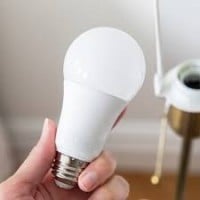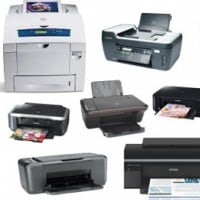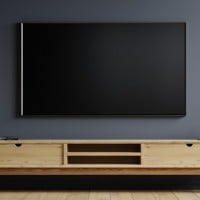Top 10 Products that are Designed to Fail
Many products today are affected by planned obsolescence, a commonly used term for products designed to break easily, be too expensive to repair or to quickly go out of style. Companies deliberately shorten the lifespan of their products, the end result being returning customers sooner than necessary and more money. There are many issues tied with planned obsolescence, many of them being moral and environmental as it often results in a lot of these products ending up in the trash. Let's see which products on the market are designed to fail, some you might not even know about..

Probably the most well-known example of planned obsolescence, we know it is possible for light bulbs to last much longer than the mere 1,000 to 2,000 hours we have today. For example, in Livermore, California, a light bulb known as the Centennial Light Bulb has been burning since 1901.
Before 1939, a group known as the Phoebus cartel, composed of manufacturers such as Osram, General Electric, Associated Electrical Industries, and Philips, controlled the manufacture and sale of incandescent light bulbs. They allocated market territories and reduced the useful life of light bulbs. The cartel lowered operational costs and standardized the life expectancy of light bulbs at 1,000 hours, down from 2,500 hours. Since they faced no competition, they had no problem raising prices. There are theories suggesting that inventors may have created light bulbs that last much longer, but that these patents were purchased by one of these companies and never used.

The main issue with printers lies in their ink cartridges. These cartridges have a smart chip that informs the printer when it's low on ink. However, it has been found that they are programmed to send this information after 75% of the ink has been used, meaning they don't utilize the remaining 25%. This, in turn, forces consumers to buy a new one sooner.
Worse yet, some printers are programmed to malfunction after a certain period of use or after a certain number of copies have been printed. According to manufacturers, this is designed as a safety feature. If you've guessed that repairing a printer is more expensive than buying a new one, then you are correct.

Almost everyone in the 21st century has a smartphone, and all of these consumers face the same issues with them. Whether it's an iPhone or an Android, most smartphone users find that their device becomes slower and has a lower battery life after about a year. The worst part is that smartphones, especially iPhones, are designed in such a way that you can't repair them yourself. Manufacturers have implemented anti-repair designs into their products. Essentially, the phone's software will refuse to work if any major parts are replaced. If you go directly to the manufacturer for the repair of your device, chances are they'll encourage you to buy a new one instead.

The history of planned obsolescence began with Alfred P. Sloan, who first implemented the concept on a large scale while working for General Motors in the 1920s. Car manufacturers were struggling to sell cars because most people who could afford them already had one. The solution was simple: the model year system. This system doesn't require manufacturers to improve the machinery. All they have to do is change the car's appearance.
As a result, the old model goes out of style, and the new one becomes more desirable due to its cosmetic changes. Thankfully, modern cars are generally not lacking in terms of longevity and safety.

Nylon stockings for women are known to tear easily, and this is by design. When they first came onto the market in the 1920s, these tights were very strong, stretchy, and of high quality. In advertisements, they were even shown towing a car! Because the product was so well-made, the company that originally produced them, DuPont, had their scientists work on making the fabric weaker so that it would rip and tear more quickly.
Definitely! These rip so easily that I refuse to wear them.

Planned obsolescence in the clothing industry occurs when a product designer creates a garment intended to become outdated after a certain period. This design approach limits the product's lifespan, often forcing the consumer to upgrade to a newer piece. But that's not the worst part. Some manufacturers deliberately design their clothes to wear and tear more quickly. For instance, certain jeans are far less durable than other types of pants. Marketing strategies also contribute to this issue. Customers are made to feel dissatisfied with products that still function perfectly, leading them to buy more.

College students can certainly relate to this one. Textbooks are released in new editions every few years, even though there is often little difference between the "old" book and the new one. The reason for publishing new editions is simple: students often sell their books to other students who are just starting out and need them. However, when the school requires the new edition, you are forced to buy it, rendering the old ones obsolete. This strategy ensures that the most money is made off of textbooks every year.

The longevity of footwear depends on the type and brand. For instance, if you buy socks from a dollar store, they're usually guaranteed to last only a few weeks or months before they start getting holes. However, if you spend more money on a high-quality brand, they will last longer. The same goes for shoes.
I feel like my shoes really don't last long.

Back in the days of tube televisions, you could call a TV repairman to fix your set. Nowadays, due to planned obsolescence, modern flat-screen TVs are not easily repairable and are often cheaply made. Repairing a modern flat-screen TV usually costs more than buying a new one. Because people often look for better and bigger TVs, sales of modern sets are always strong.

Household appliances were once built to last for years. You'd buy one, and you'd keep it forever. You'll often hear stories from people around you that their old fridge, electric stove, dryer, or washing machine lasted longer than their newer one. That's because companies no longer make them to last.
Of course, as technology improves, more energy-efficient machines have been developed. However, it seems to have come at the cost of longevity. For example, the average washing machine used to use 35 to 50 gallons per load. The high-efficiency ones today use only 12 to 15, which is much better for the environment and water conservation. However, old machines could last for at least 10 years.

Computers are another modern example of planned obsolescence, partly because technology keeps evolving every year. This means that eventually, your computer and its components will not be compatible with new software. Windows, for example, releases a new version every few years, and an old computer designed with Windows 7 in mind won't be able to run Windows 10 well, if at all.
I'm not placing this item as high on the list simply because much of it can't be controlled. Technology is always going to evolve, and natural obsolescence will result. Additionally, tech companies do work hard to improve their products. However, some computers, especially portable ones, suffer from issues similar to smartphones, such as becoming slower, batteries not lasting as long, or some components being of lower quality.

There's a reason why you should replace your toothbrush every few months: it promotes good dental hygiene.


You'll be lucky to own one of these for a week without it breaking. They break way too easily and can be hard to control.
